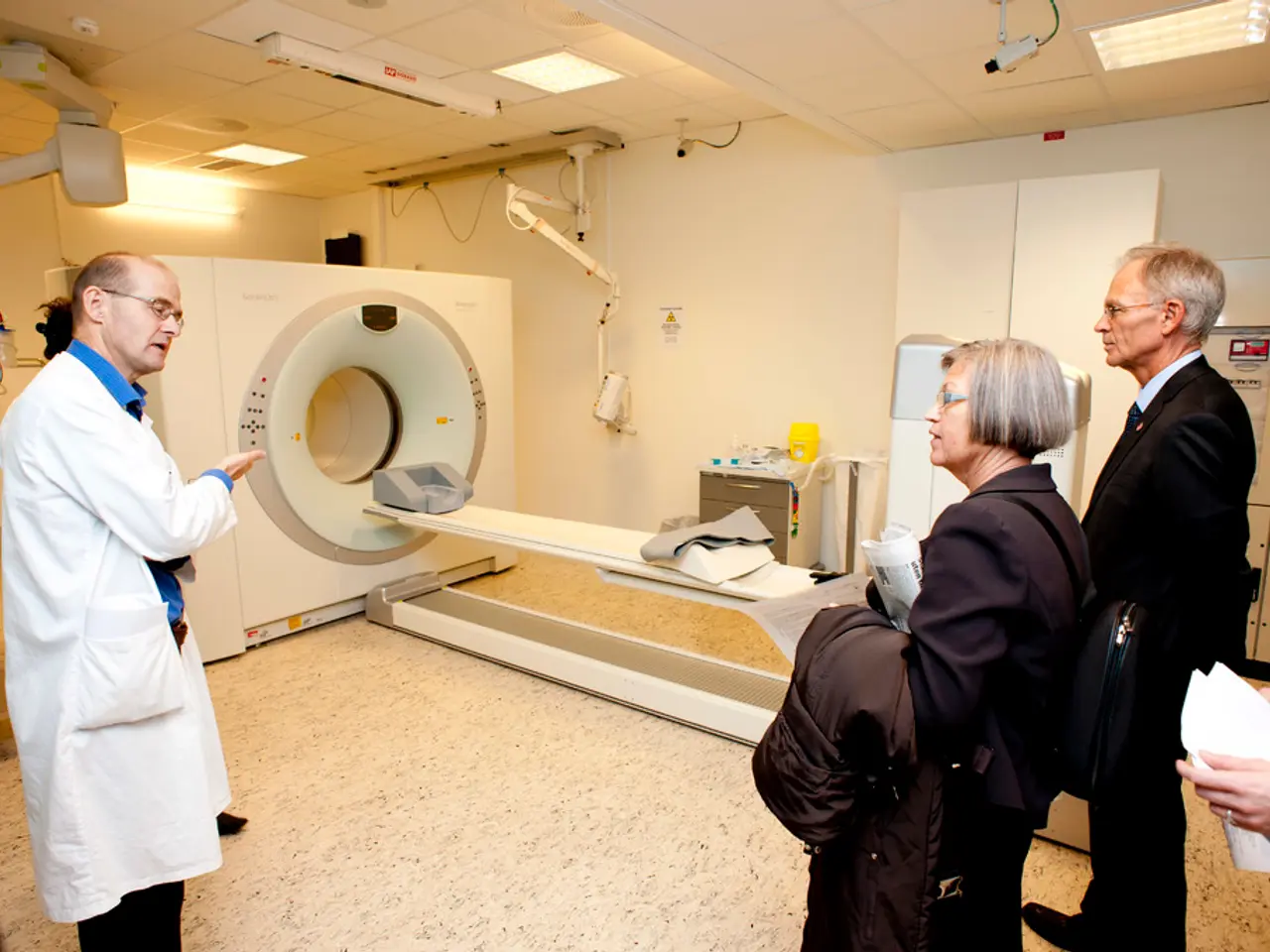Causes of Purple Rashes: A Look into the Possibilities
Understanding Thrombocytopenic Purpura: Causes, Types, and Associated Conditions
Thrombocytopenic purpura, a condition characterized by purpuric skin manifestations due to impaired blood clotting, can be caused by a variety of factors. This article aims to provide an overview of the common causes, types, and associated conditions of thrombocytopenic purpura.
Common Causes of Thrombocytopenic Purpura
Thrombocytopenic purpura primarily arises from low platelet counts, or thrombocytopenia. The causes can be broadly classified into three categories:
- Immune-mediated destruction of platelets, as in Immune Thrombocytopenic Purpura (ITP), where the immune system mistakenly attacks platelets. This is often triggered by viral infections, autoimmune disorders, medications, or pregnancy.
- Microangiopathic processes, such as Thrombotic Thrombocytopenic Purpura (TTP), caused by a deficiency of ADAMTS-13 enzyme leading to abnormal clot formation and platelet consumption, and Hemolytic Uremic Syndrome (HUS) triggered by infections producing Shiga toxin or by complement system dysregulation.
- Other causes include bone marrow disorders, liver disease (affecting coagulation factor production), infections like HIV and hepatitis C, and certain medications, which indirectly cause thrombocytopenia.
Common Types of Thrombocytopenic Purpura
| Type | Cause/Mechanism | Typical Features | |-------------------------------|-----------------------------------------------------------------|---------------------------------------------------| | Idiopathic (or Immune) Thrombocytopenic Purpura (ITP) | Autoimmune destruction of platelets | Can be acute (children, often post-viral) or chronic (adults), presents with easy bruising and mucosal bleeding[2][4] | | Thrombotic Thrombocytopenic Purpura (TTP) | ADAMTS-13 deficiency causing microthrombi and platelet consumption | Hemolytic anemia, thrombocytopenia, often with renal and neurological complications[3] | | Hemolytic Uremic Syndrome (HUS) | Shiga toxin infection or complement dysregulation | Acute kidney injury, microangiopathic hemolytic anemia, thrombocytopenia[3] | | Evans Syndrome | Autoimmune hemolytic anemia combined with immune thrombocytopenia | Positive Coombs test and both anemia and thrombocytopenia[3] |
Associated Conditions
Several conditions are associated with thrombocytopenic purpura. For instance, Vitamin C deficiency and Scurvy can cause a purpuric rash due to problems with collagen synthesis. Ehlers-Danlos syndromes, a group of inherited conditions affecting connective tissues, can also lead to purpuric rashes, with the vascular form causing skin to bruise very easily.
Infection-induced purpura is another type of purpuric rash that develops in response to an infection or affects platelet levels in the body. Henoch Schönlein purpura, the most common type of vasculitis in children in North America, is characterized by inflammation of blood vessels and can develop following an upper respiratory tract infection or cold.
Recognizing Purpuric Rashes
A purpuric rash is characterized by raised red or purple spots similar to small bruises or blood spots. Pressing a glass against the affected skin area does not make the spots go away in both cases of purpuric rash.
Precautions and Risks
While most cases of purpuric rashes are not life-threatening, certain conditions associated with purpuric rashes pose risks. For example, the vascular form of Ehlers-Danlos syndrome carries a risk of internal bleeding, which could become life-threatening. Purpura associated with systemic lupus erythematosus (SLE) is a symptom of the autoimmune condition, characterized by inflammation and tissue damage in various parts of the body.
Sun Exposure and Aging
Older people can develop actinic purpura with sun exposure on parts of the skin commonly exposed to the sun. This happens because sun exposure can worsen skin thinning and blood vessel fragility that naturally accompanies the reduction in collagen as a person ages.
In summary, thrombocytopenic purpura results from varied conditions causing low platelet count either by immune destruction or consumption in microvascular thrombi, with ITP and TTP being the most commonly recognized types. Recognizing and understanding these conditions can aid in early diagnosis and treatment, improving prognosis for affected individuals.
- The immune system's erroneous attack on platelets, often initiated by viral infections, autoimmune disorders, medications, or pregnancy, results in the immune-mediated destruction category of causes for thrombocytopenic purpura.
- In the case of Immune Thrombocytopenic Purpura (ITP), a type of thrombocytopenic purpura, the immune system inadvertently targets and destroys platelets.
- The deficiency of ADAMTS-13 enzyme in Thrombotic Thrombocytopenic Purpura (TTP) leads to abnormal clot formation, platelet consumption, and subsequent microangiopathic processes.
- Scientific research in dermatology has discovered a connection between Vitamin C deficiency and Scurvy, where problems with collagen synthesis can result in a purpuric rash similar to that seen in thrombocytopenic purpura.
- Henoch Schönlein purpura, the most common type of vasculitis in children in North America, develops as a response to an upper respiratory tract infection or cold and involves inflammation of blood vessels, similar to certain thrombocytopenic purpura-associated conditions.
- Aging and sun exposure can contribute to actinic purpura, as the reduction in collagen and the fragility of blood vessels in older skin can be worsened by exposure to sunlight in areas commonly exposed to the sun.
- Systemic lupus erythematosus (SLE) is an autoimmune condition characterized by inflammation and tissue damage in various parts of the body, and purpura associated with it is a recognized symptom of the disease.




